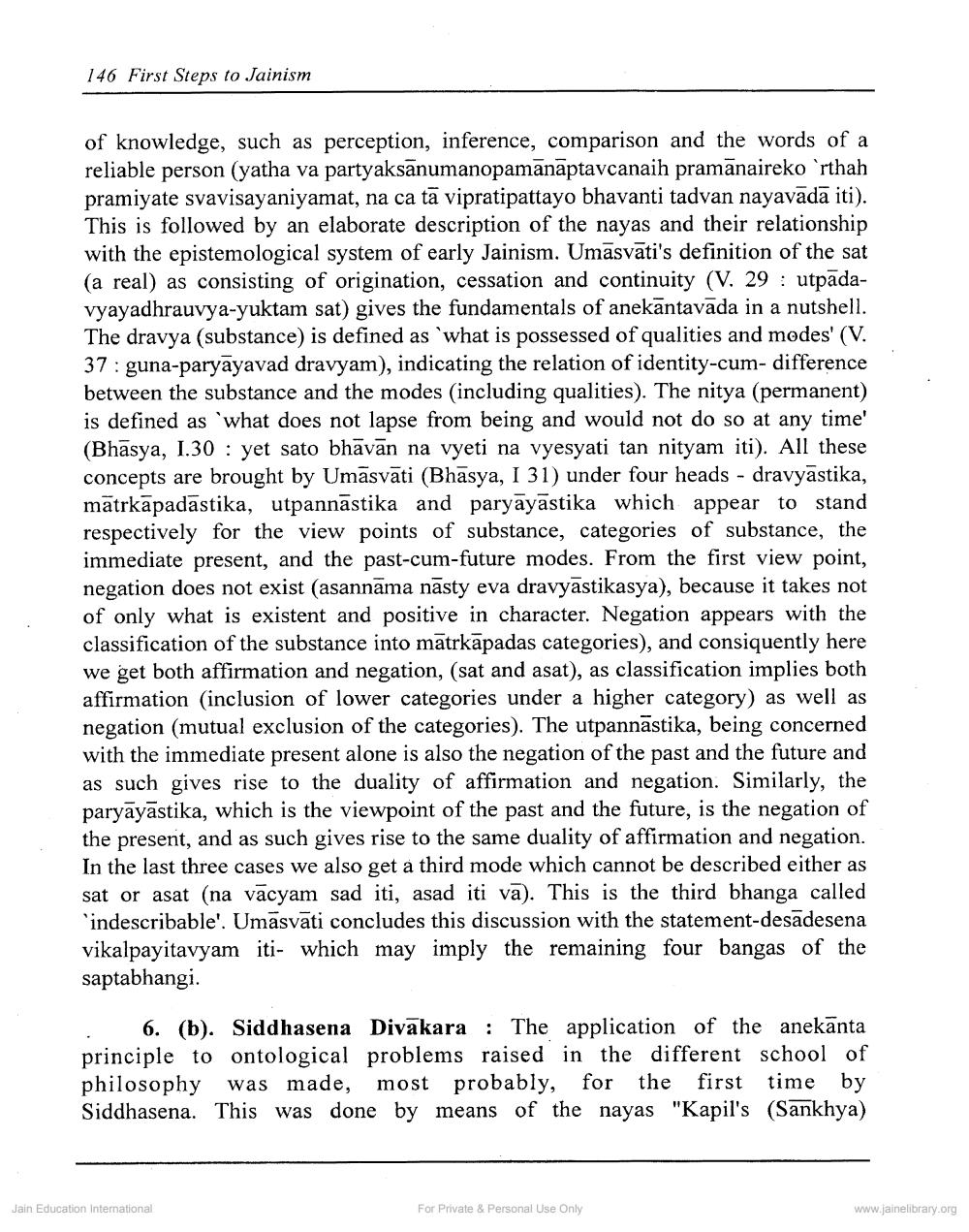________________
146 First Steps to Jainism
of knowledge, such as perception, inference, comparison and the words of a reliable person (yatha va partyaksānumanopamanāptavcanaih pramānaireko `rthah pramiyate svavisayaniyamat, na ca tā vipratipattayo bhavanti tadvan nayavada iti). This is followed by an elaborate description of the nayas and their relationship with the epistemological system of early Jainism. Umasvati's definition of the sat (a real) as consisting of origination, cessation and continuity (V. 29: utpadavyayadhrauvya-yuktam sat) gives the fundamentals of anekantavada in a nutshell. The dravya (substance) is defined as 'what is possessed of qualities and modes' (V. 37 guna-paryayavad dravyam), indicating the relation of identity-cum- difference between the substance and the modes (including qualities). The nitya (permanent) is defined as 'what does not lapse from being and would not do so at any time' (Bhasya, I.30 yet sato bhāvān na vyeti na vyesyati tan nityam iti). All these concepts are brought by Umasvati (Bhasya, I 31) under four heads - dravyastika, matrkapadastika, utpannastika and paryayastika which appear to stand respectively for the view points of substance, categories of substance, the immediate present, and the past-cum-future modes. From the first view point, negation does not exist (asannāma nasty eva dravyastikasya), because it takes not of only what is existent and positive in character. Negation appears with the classification of the substance into matrkāpadas categories), and consiquently here we get both affirmation and negation, (sat and asat), as classification implies both affirmation (inclusion of lower categories under a higher category) as well as negation (mutual exclusion of the categories). The utpannāstika, being concerned with the immediate present alone is also the negation of the past and the future and as such gives rise to the duality of affirmation and negation. Similarly, the paryāyāstika, which is the viewpoint of the past and the future, is the negation of the present, and as such gives rise to the same duality of affirmation and negation. In the last three cases we also get a third mode which cannot be described either as sat or asat (na vācyam sad iti, asad iti va). This is the third bhanga called 'indescribable'. Umasvati concludes this discussion with the statement-desādesena vikalpayitavyam iti- which may imply the remaining four bangas of the saptabhangi.
6. (b). Siddhasena Divakara The application of the anekanta principle to ontological problems raised in the different school of philosophy was made, most probably, for the first time by Siddhasena. This was done by means of the nayas "Kapil's (Sankhya)
Jain Education International
For Private Personal Use Only
www.jainelibrary.org




